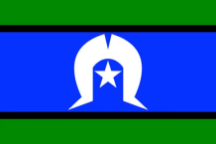Disability Inclusion Toolkit
At Netball Queensland, we believe that netball should be accessible for everyone. Netball Queensland has developed a toolkit of resources to ensure that everyone can participate and enjoy netball. The resources and information in this toolkit have been developed in consultation with peak disability organisations and people with lived experience. The resources provide you with an overview of disability types, how you can best support people with a disability in netball and how to adapt netball sessions as needed to support participation. This program/initiative has received funding from the Australian Government Department of Health, Disability and Ageing.
Attention Deficit Hyperactivity Disorder
ADHD
Attention Deficit Hyperactivity Disorder (ADHD) is a developmental disorder that impacts brain’s higher-level thinking and can affect attention, self-regulation, thoughts and emotions.
Autism Spectrum Disorder
Autism Spectrum Disorder (ASD) is a developmental condition that involves a unique way of perceiving and experiencing the world. It is categorised by differences in social communication and social interaction across multiple contexts.
Intellectual Disability
Intellectual disability covers a range of conditions that cause difficulties and differences in a person's intellectual functioning and adaptive skills. Some conditions which fall under the intellectual disability category include: William’s syndrome, Fragile-X syndrome, Down syndrome, Acquired Brain Injury (occurring during the developmental period), Rett syndrome and Prader-Willi syndrome.
Deaf & Hard Of Hearing
Hearing loss impacts a person’s ability to hear speech and other sounds. There are different levels of loss ranging from mild to moderate, to severe to profound. People with mild to severe hearing loss usually still have some hearing present however they may have difficulty hearing certain frequencies, sounds may be muffled, may have difficulty when there is background noise or have difficulty hearing noise from certain directions.
Visual Impairment
Vision impairment is a partial or full loss in the ability to see. There are various terms used to describe different categories of vision impairment including ‘partially sighted’, ‘low vision’, ‘legally blind’, ‘totally blind’, depending on factors such as visual acuity, level of ability to correct the impairment, and how the vision loss impacts on functioning.
Physical Impairment
Physical impairments and conditions are those that affect a person’s physical functioning. Examples include (but are not limited to): cerebral palsy, spina bifida, multiple sclerosis, spinal cord injury, muscular dystrophy, short stature, chronic arthritis, fibromyalgia, and loss of limb/s.

